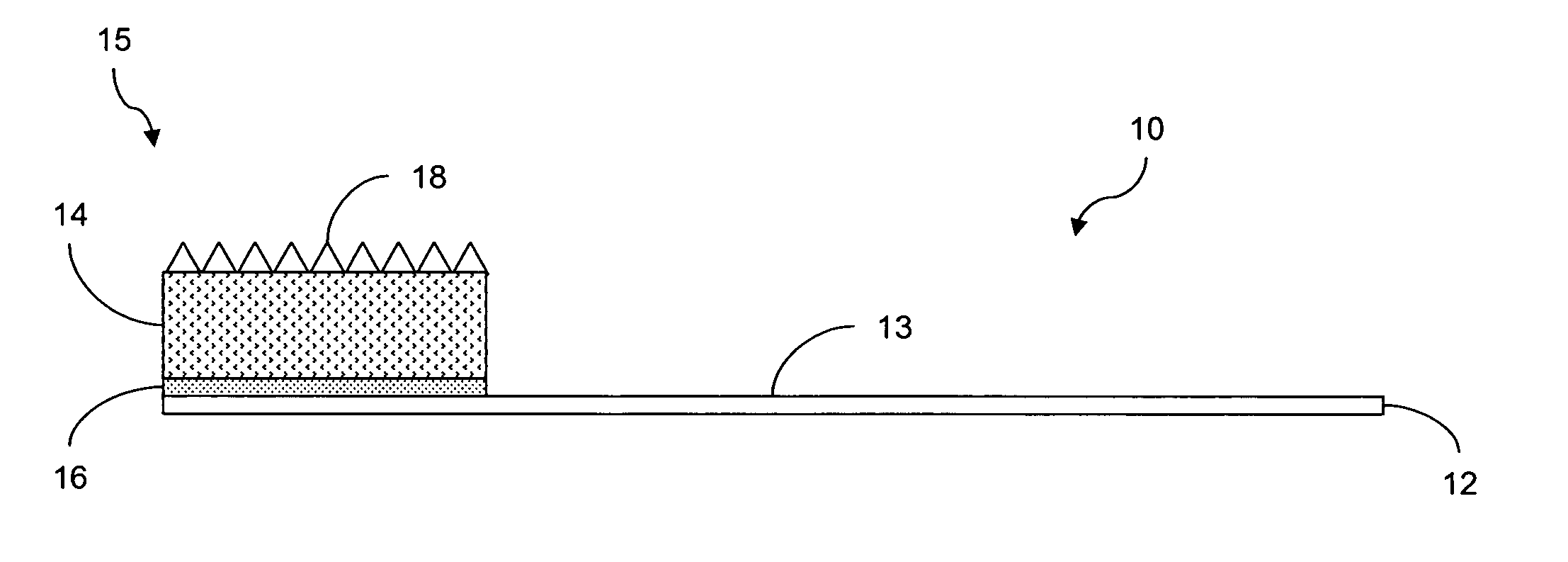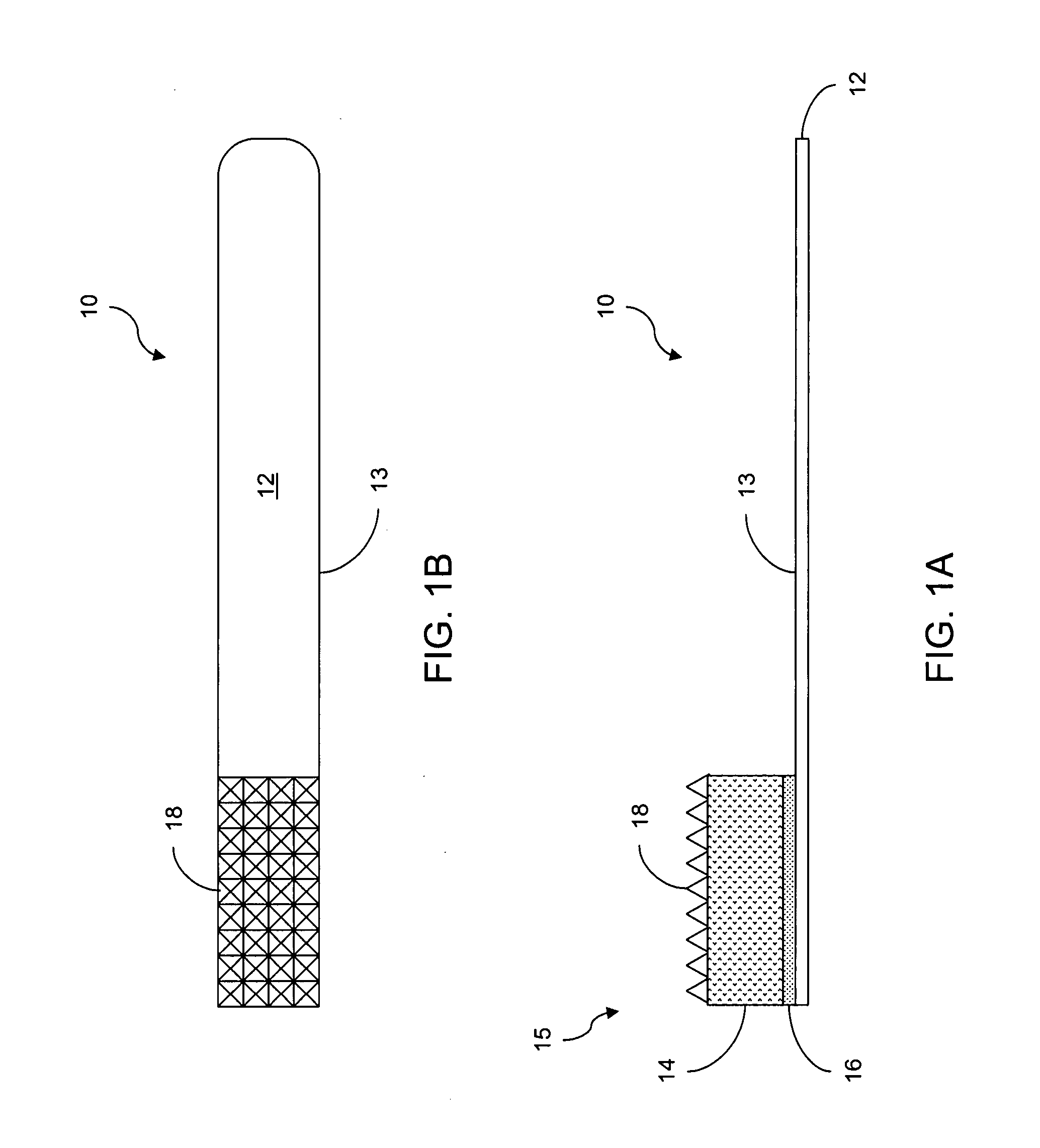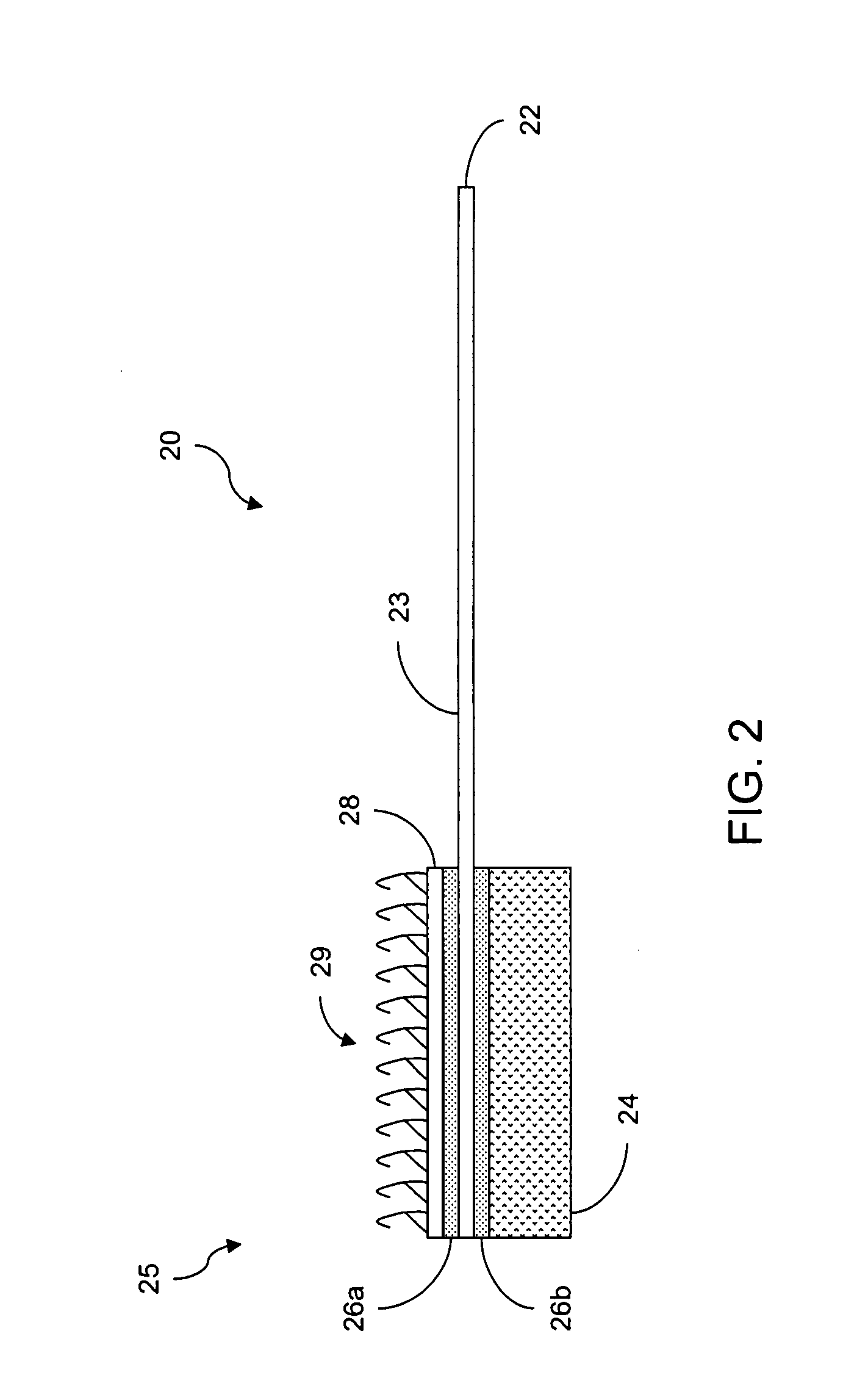Devices and methods for collecting oral samples of enriched serous fluid
a serous fluid and oral sample technology, applied in the field of immunological testing, can solve the problems of low immunoglobulin level in whole oral fluid, inability to predict blood levels, and inability to detect igg and other immunoglobulins in saliva at best, so as to avoid the complexity, complications, and risks associated.
- Summary
- Abstract
- Description
- Claims
- Application Information
AI Technical Summary
Benefits of technology
Problems solved by technology
Method used
Image
Examples
example 1
[0069]Referring again to FIG. 1, an exemplary multilayered sample collection device 10 includes a sample retaining member 14 coated on one side with an abrasive forming a roughened surface 18. The sample-retaining member 14 is formed from a yellow urethane foam sponge 14, coated on one side with a 40-grit aluminum oxide compound, forming the roughened surface 18. The foam sponge 14 is formed from a 6.4 mm (about 0.25 inch) thick foam sheet stock cut into a 7×20 mm block (about 9 / 32× 25 / 32 inches). The foam sponge 14 is adhered to a top surface of a proximal end of the substrate 12. The substrate 12 is formed from a 0.5 mm (about 20 mills) thick plastic strip of polyethylene terephthalate (PET), commercially available from Polyester Converters of Fullerton, Calif. The substrate 12 is formed in a substantially rectangular shape of about 7×120 mm (about 9 / 32× 4 / 75 inches). The foam sponge 14 is adhered to the top surface of the proximal end of the substrate 12 using an adhesive layer. ...
example 2
[0072]In another example, referring again to FIG. 2, an alternative exemplary multilayered sample collection devices 20 includes a hook portion 28, 29 of a hook and loop fastening system, such as VELCRO Brand of Extreme Fasteners providing an aggressive closure with an all-weather adhesive specially formulated for rough surfaces, commercially available from Velcro USA Inc. of Manchester, N.H. The hook portion 28, 29 of the fastening system is cut into 7×20 mm (about 9 / 32× 25 / 32 inches) strips and adhered to a top surface of a proximal end of the substrate 12. Again, the substrate 22 is a 7×120 mm (about 9 / 32× 4 / 75 inches) strip of 0.5 mm (about 20 mills) thick strip of PET. The hook portion 28, 29 is adhered using a 7×20 mm (about 9 / 32× 25 / 32 inches) piece of double-stick acrylic adhesive tape 26a. In the exemplary embodiment, the adhesive tape 26a is as a non-sensitizing, medicinal grade wound care adhesive, such as ARCARE 8311, which is commercially available from Adhesives Resear...
example 3
[0075]In yet another example, a multilayered sample collection device 30 formed about an elongated substrate 32 is constructed as shown in FIG. 3. The substrate is a 7×120 mm (about 9 / 32× 4 / 75 inches) strip of 0.5 mm (about 20 mills) thick PET. A 7×20 mm (about 9 / 32× 25 / 32 inches) cut strip of double-sided acrylic adhesive tape 36b. The adhesive tape 36b is a non-sensitizing, medicinal grade wound care adhesive tape, such as ARCARE 90374, also commercially available from Adhesives Research, Inc., Glen Rock, Pa. In construction, the double sided adhesive tape 36b is adhered along one side to the substrate 32 leaving a 60-pound siliconized Kraft release liner paper 38 still attached along the other side of the double-sided adhesive tape 36b. To the side adjacent to but opposite the release liner a 7×20 mm (about 9 / 32× 25 / 32 inches) piece of one 6.4 mm (about 0.25 inch) thick urethane foam 34, pretreated as described in Example 1 with a capsaicin is attached to the substrate 32 using a...
PUM
 Login to View More
Login to View More Abstract
Description
Claims
Application Information
 Login to View More
Login to View More - R&D
- Intellectual Property
- Life Sciences
- Materials
- Tech Scout
- Unparalleled Data Quality
- Higher Quality Content
- 60% Fewer Hallucinations
Browse by: Latest US Patents, China's latest patents, Technical Efficacy Thesaurus, Application Domain, Technology Topic, Popular Technical Reports.
© 2025 PatSnap. All rights reserved.Legal|Privacy policy|Modern Slavery Act Transparency Statement|Sitemap|About US| Contact US: help@patsnap.com



